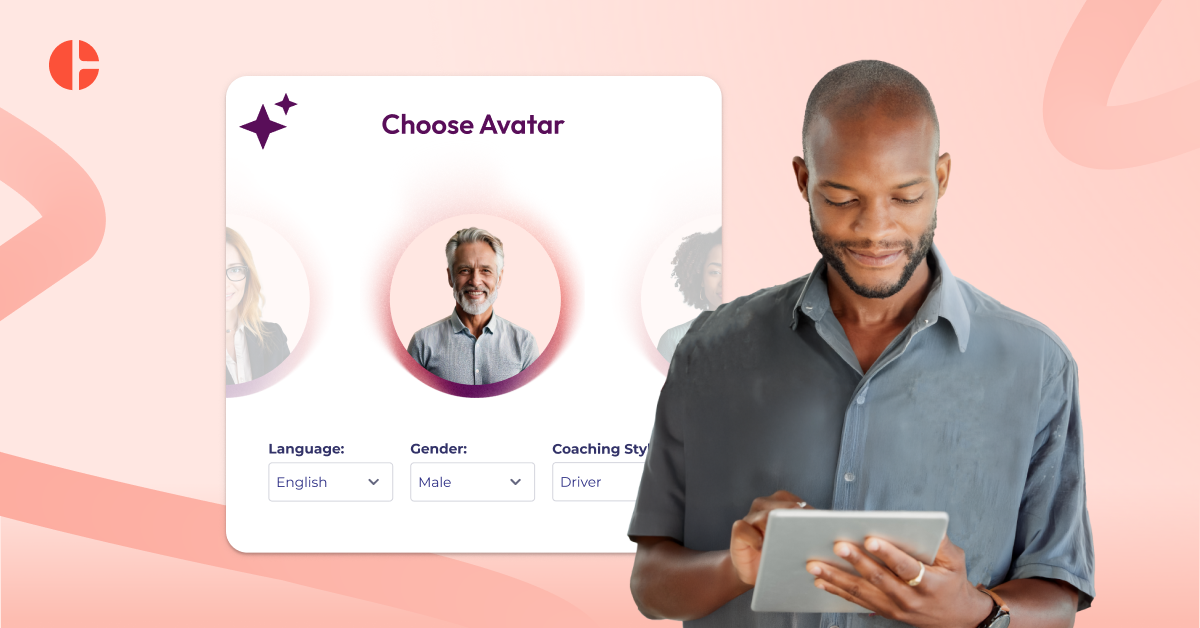4 Steps to Utilize Employees to Improve Your Employer Brand

You know your company is an amazing place to work and is doing great things, but does everyone? You're using every marketing tactic you can to attract new business. But what are you doing to attract new talent to your company?
Your employer brand strategy is as important as executing your marketing strategy. There is a powerful way to convey your employer brand to the world. It involves turning your employees into brand ambassadors. The entire process involves four simple steps.
In this blog, we go over the following:
- What is employer branding?
- What is employee branding?
- The company role in shaping a positive employee brand
- Improve your employer brand by turning employees into brand ambassadors
By the end of the blog, you’ll have a basic understanding of how employee and employer branding work together. You will also see how professional coaching helps you create an employer brand strategy.
What is employer branding?
Let’s examine what employer and employee branding are, starting with employer brands. At CoachHub, we describe the employer brand in four distinct pillars:
HR policy
HR policy includes everything the human resources department does for your organization. It’s comprised of:
- Recruitment
- Onboarding
- Training
- Evaluations
- Wages and salaries
- Benefits
- Team building
- Culture building
- And more
Company brand
Company brand comprises your organization’s brand identity. Brand identity consists of:
- Mission, vision and values
- Facts about the organization
- Company history
- Corporate culture
- Products and services
- Leadership style
- Tone of voice
- Logos, colors, personality
Internal company image
Internal company image describes how employees feel about the quality of life at work. For example:
- Work/life balance
- Career development
- Opportunities for advancement
- Benefits
- Diversity and inclusion
- Paid time off
External company image
External company image describes how people outside the organization perceive the company. These people include:
- Employment candidates
- Influencers
- Recruiters
- School administrators
Employer brand building
Building the foundation of your employer brand involves content strategy and content marketing. It encompasses the following elements:
- Brand messaging
- Customer and employment candidate personas
- Digital content
- Company website
- Landing pages
- Blogs
- Videos
- Social media posts
- Paid ads
- Other online content
- Offline efforts
- Networking events
- Conferences and tradeshows
Social media and employer brand strategy
Social media is a powerful aspect of employer brand strategy development. It includes company profiles on sites from LinkedIn to TikTok. And which sites your company is on will depend on its target audience.
What is employee branding?
Your employees also have brands. Their brands are made up of the following four elements:
Internal experiences
Your employees' internal experiences about working for you are important. These experiences include:
- How employees think and feel about working for your business
- Their excitement level about coming to work
- What motivates them to perform at their best (including, but not limited to, salary)
External communication
Your employees have lives outside of work. Their external communication includes what they say about your company. It also contains what they say to each other when they are off the clock. Many of these conversations are about what working for your organization is like.
Professional profiles
Your employees' professional profiles include their online professional brand. It consists of:
- Professional social media profiles, like LinkedIn
- Shares, posts and comments on LinkedIn and similar sites
- Employee reviews on recruiting sites, like Glassdoor and Indeed
Personal profiles
Your employees also have personal online profiles that make up their brand. Their personal brand encompasses:
- Personal social media profiles
- Personal blog
- Personal website
- Comments sections of publications
- Multiplayer online games
When they're online, employees share details about their day-to-day lives. They post their thoughts, their opinions and content they like on social media. They also have conversations about their job and the organization where they work. Some employees might also create TikTok, Snapchat or YouTube content about work.
The company role in shaping a positive employee brand
From the company’s point of view, employee branding is all about what it’s like to work there. You want them to share your content about company culture. You have almost no control over how and where your employees talk about their experiences. So, a top-down approach to company culture and employee well-being is crucial.
According to EveryoneSocial, helping to shape your employees’ brands involves two things:
- Aligning employees with your mission, vision and values through your company culture efforts
- Motivating them to convey that culture to current and prospective clients and employees in a positive way
Keep in mind that employee voices and their personal brands can either help or hurt your company brand strategy. That’s because their voices are three times more convincing than the voice of your CEO. Your organization must cultivate a positive culture that accomplishes the following:
- Embraces diversity and inclusion
- Values everyone’s opinions
Employees are more likely to have a positive view of where they work when there is a culture that includes those elements. When your employees feel positive about company culture, they share that sentiment online.
Improve your employer brand by turning employees into brand ambassadors
You should not fear your employees’ social media presence. Yes, what they say about your organization is more powerful than anything you and other senior leaders can author.
That’s a power your company needs to harness. But how? By turning your employees into advocates and brand ambassadors. Here’s what that means.
Step 1 – Transform workers into employee advocates
Encourage your employees to adhere to company mission, vision and values. Leaders and managers must also behave in ways that exhibit their own alignment to core company principles. Walking the walk, as well as talking the talk, goes a long way towards improving company culture and employee well-being.
When employees are happy, it shows. As a result, they will want to tell others in person and online that your company is the best place to work. Whenever you post company culture and marketing content, they’ll:
- Interact with it
- Share it
- Invite their personal and professional networks to engage with it as well
Step 2 – Embrace inclusion and collaboration
Embrace inclusion and create a space where everyone feels safe to share ideas. Make listening and open communication part of your core values. Promote creative collaboration through regular team-building meetings and events. Focus on worker well-being. Exhibit these ideas in how you behave and communicate at work in your role as a leader.
Hold open discussions and training on how to create and maintain a professional profile online. Have clear, concise social media guidelines and be open to changing them based on employee feedback. Resist groupthink and the fear that employee voices online will diverge from the “company line.”
Cultivating and living this culture of trust improves company culture. It fosters positive employee experiences and influences employee opinions for the better.
Step 3 – Cultivate employee ambassadors
You could stop at the second step. At this point, your employees will be brand advocates. Yet, there’s a way to harness another level of employee branding –– the employee ambassador. To create them is simple. It involves asking employees to volunteer to share their stories while making it easy for them to do so.
On Link Human’s Employer Branding podcast episode Building Employer Brand Through the Voices of Your Employees, with Phil Strazzulla, Phil recommends that companies create questionnaires that employees can answer. There are two ways to share the surveys:
- As interviews on a company blog page
- Crafted into a polished article by your content team under the employee’s byline
Next, encourage employees who author content for the initiative to share it online.
You can also incentivize employees to post what it’s like working inside the company on LinkedIn and Glassdoor. Encourage them to share company-created content as well.
Consider creating a committee of lead employee ambassadors or hiring a community manager. The community manager can act as lead employee ambassador or manage the group.
Lead employee ambassadors often do the following:
- Generate culture content
- Interact with employees online
- Interact with job candidates online
- Interact with customers online
The types of content they create encompass:
- Social media comments
- Industry groups
- Their own employee-created content
Step 4 ––Deploy coaching for employees, managers and leadership teams
Professional coaching for leaders, managers and employees is an invaluable part of creating an employer brand strategy. Coaching helps improve communication across the entire organization.
Additionally, managers can improve employee ambassador programs through ongoing coaching. Professional coaching programs improve the employee and employer brand.
Coaching teaches employees how to use social media to:
- Promote themselves professionally
- Build their employee brand
- Speak about the company brand
Leverage the same quality of professional coaching you extend to leadership teams to all employees. And don't stop at one short seminar. Consider offering 1:1 online coaching to managers. Professional coaching provides valuable insights to the entire company, including via psychometric testing such as the DISC model.
CoachHub offers a variety of professional coaching options that enhance your employer brand, improve company culture and encourage employees to communicate about your organization in ways that help attract new talent.
FAQ
Yes, executive coaching plays a key role in retaining and engaging senior leaders by giving them space to reflect, grow, and lead with purpose. Through individualised support, executives strengthen communication, decision-making and resilience — all of which drive engagement and long-term satisfaction.
With CoachHub Executive™, organisations not only see improved leadership performance but also greater alignment, motivation and confidence among their top talent, resulting in higher retention and a stronger leadership pipeline.
CoachHub Executive™ goes beyond one-to-one sessions by integrating technology, measurable insights and continuous learning into every coaching journey. Each executive benefits from personalised matching with certified coaches and flexible session formats to reinforce development between sessions.
While traditional coaching often lacks scalability or measurable tracking, CoachHub ensures impact visibility through data-driven dashboards, 24/7 scheduling flexibility and a consistent, high-quality experience for leaders worldwide, that can be tailored to your organisation's goals.
Yes, executive coaching is delivered across 90 countries in 40+ languages, with localised coach networks that meet the cultural and business needs of global organisations.




.svg)


.svg)





.png)



